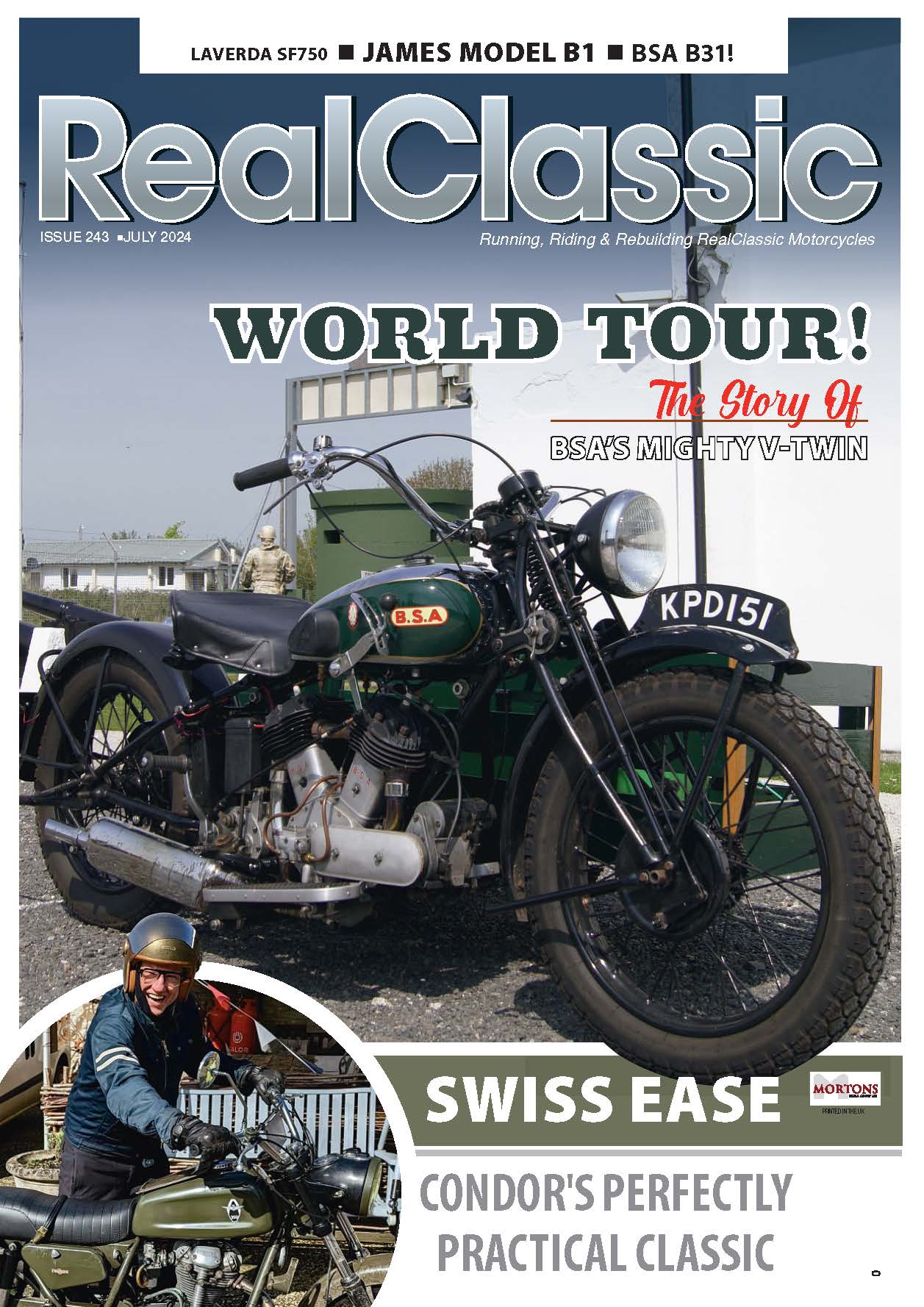Norton was long associated with sporting singles, especially the firm’s highly competitive cammy racers of the pre-war era. But in the mid-1950s a very different single-cylinder 350 joined the line-up, as Rowena Hoseason reveals…

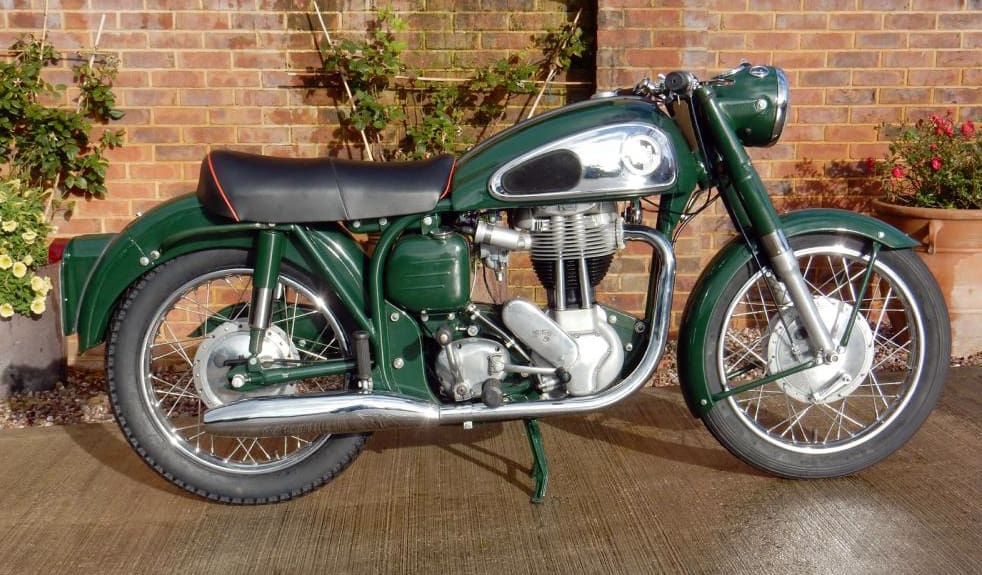
Not to be confused with Norton’s pre-war Model 50, the post-war 350 arrived for 1956 and shared many of its cycle parts with the Model 19 and ES2. The ohv 348cc roadster used an engine of 71 by 88mm to propel almost 400lb. So while it definitely benefitted from Norton’s famous steering, roadholding and stopping, ‘rapid’ it wasn’t.
AMC’s in-house gearbox arrived late in that year – Norton were by that time part of the Plumstead conglomerate. For 1957 the singles were substantially overhauled with a new cylinder head, integral pushrod tubes and cams with extended quietening ramps, a revised frame with Girling shocks, new front hub, and instruments mounted in the headlamp.
The versions built from 1959 are the most expensive and benefit from the famous featherbed frame with short Roadholders at the front end, alternator electrics giving decent lights, and good looks all-round, but the earlier non-featherbed machines are charming, much cheaper and have a better riding position. Gearbox ratios were changed for 1960.

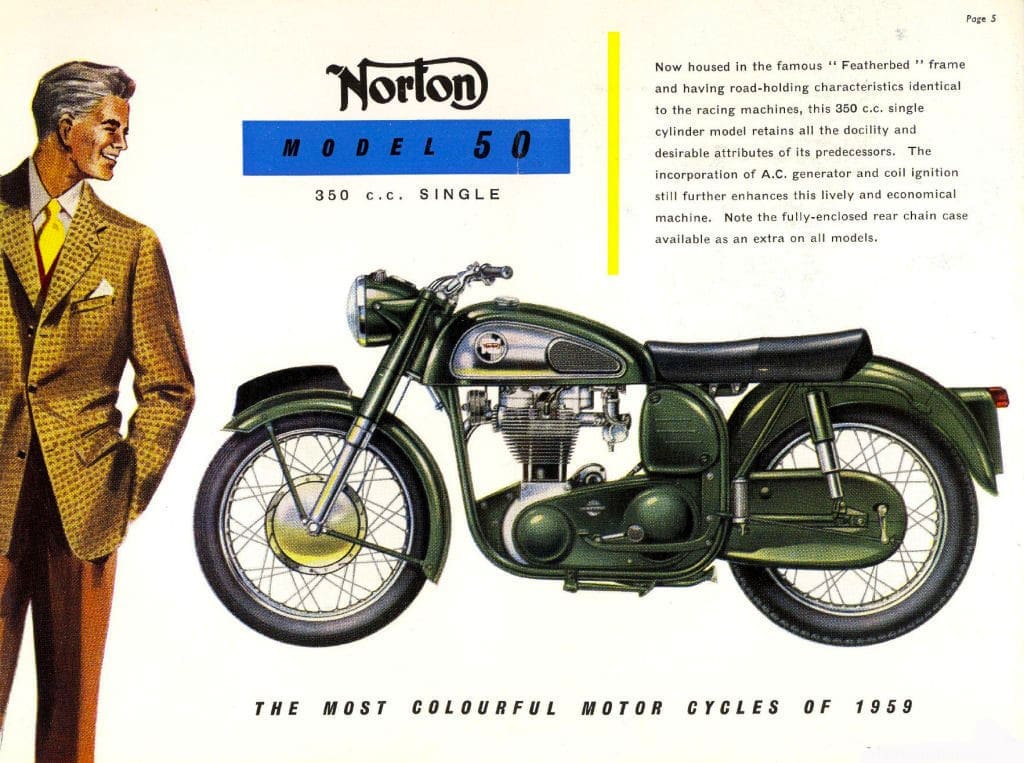
The wideline frame was swapped to a slimline for 1961 with a narrower saddle and slimmer petrol tank to match. The final incarnation, designated the Model 50 Mk2, used AMC’s short-stroke engine and these are particularly rare but worth little more than their predecessors (in fact Roy Bacon suggested they’d be worth more with AJS or Matchless badges!)
If you’re thinking of buying then you should definitely check the history of the machine and engine and frame numbers on any prospective purchase – many Model 50s were converted into Tritons by 1960s fast lads, and then get cobbled back into something like standard in the classic era. The result is still a pleasant machine to ride but it’s not worth as much as an all-original example.
The ES2 was manufactured for far longer and in much larger numbers than its smaller sibling so you’ll have greater choice of 500s than 350s. A Model 50 can cost half as much as a particularly pretty ES2, however.
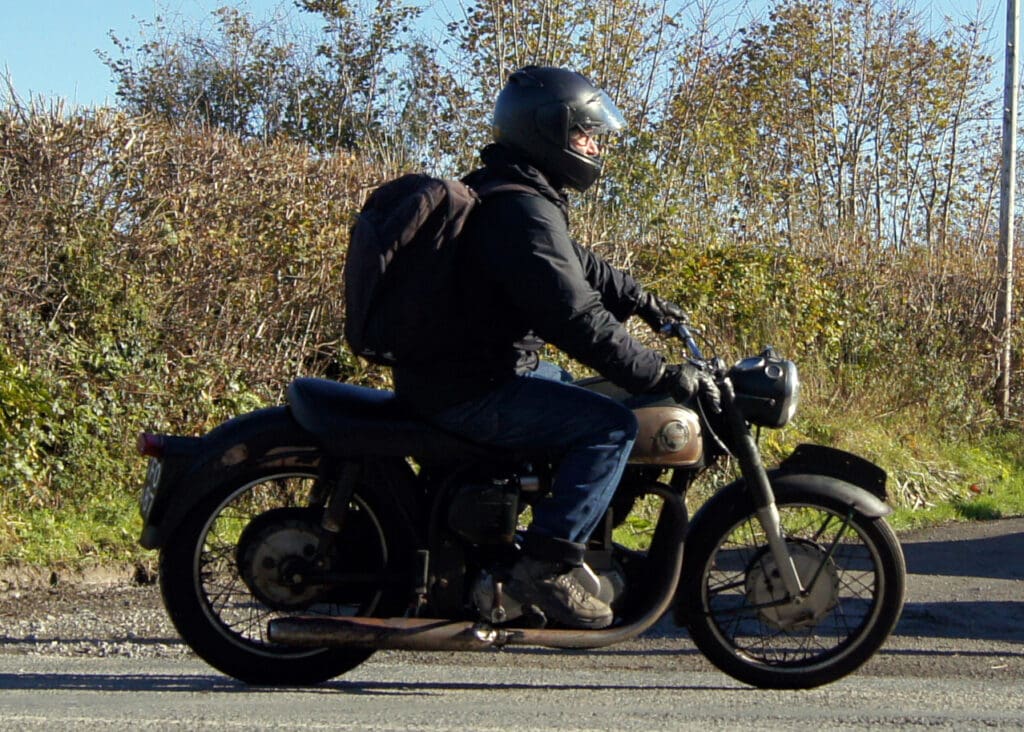
What The Papers Said
TESTED BY MOTOR CYCLING in 1959, the Model 50 returned 117mpg at 30mph. Even when travelling at 50mph, its fuel consumption barely fell below 90mpg. Flat out, the 350 reached 74mph at 4950rpm. It pulled cleanly in top gear from 25mph, but took a leisurely 47 seconds to reach its top speed and about 20 seconds to cover a standing quarter mile. Its braking was brilliant, stopping from 30mph in just 26ft at a time when 30ft was considered exemplary…
FEATHERBED SINGLES offer impeccable handling without too much of the hard ride of the earlier models. All the singles tend to have hard rather than soft suspension, but they hold their line well. Roy Bacon, 1991
THE MODEL 50 is a gentlemanly mount which combines the docility, reliability and economy of a ride-to-work machine with a standard of handling seldom found in this category. Motor Cycling, 1959
THE MODEL 50 is the most over-specified machine of all time in terms of brakes and handling. It could even have a 2ls backplate installed, but nothing much can be done to improve its slow acceleration which is due to the weight it has to pull along. Roy Bacon, 1991
VALVE ADJUSTMENT is hardly a chore with accessibility this good; there is no need to remove the tank. Equally, enclosure of the final drive chain extends its life while the design leaves the brake and chain tension adjusters fully exposed for easy manipulation. Motor Cycling, 1959
THE ES2 WAS NOT the most exciting motorcycle of its time and the Model 50 was further handicapped by having 20% less power to haul around just as much weight. Derek Magrath, 1991
NORTON’S SINGLES are not really about flashing acceleration and high speed. The heavy flywheels, relatively small carburettor and mild cam timings all worked together to produce low-down torque and pulling power. Roy Bacon, 1991
THE HEAVY FLYWHEELS of the long-stroke motor demanded time to build up momentum but this was largely offset by the ease and speed of changes with the AMC gearbox. No aptitude at all was required to bring about a quiet change. Motor Cycling, 1959
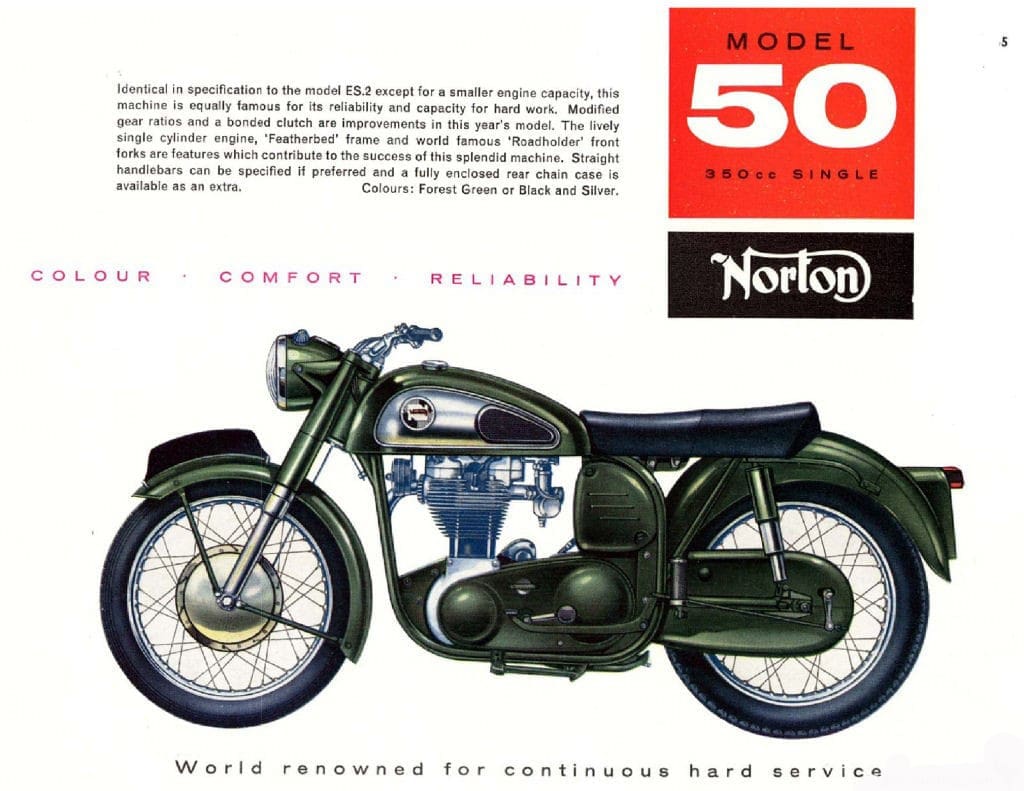
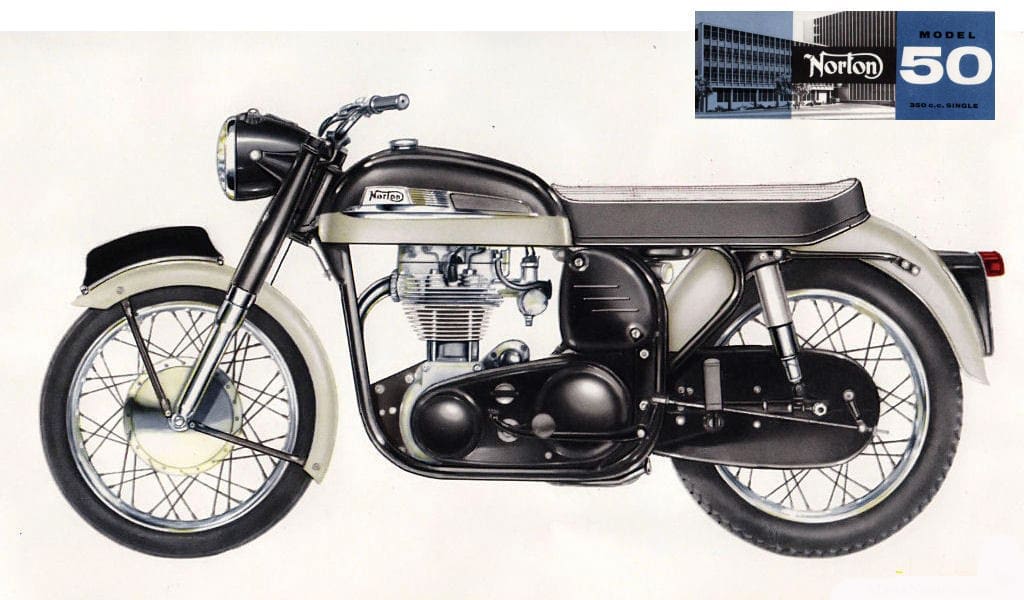
Norton Model 50 Fact Pack
Engine Air-cooled ohv single
Bore / stroke 71mm x 8mm
Capacity 348cc
Compression 7.3:1
Carburettor Amal Monobloc
Lubrication Dry sump
Primary drive Simplex chain
Transmission 4-speed AMC gearbox
Clutch Norton multiplate
Electrics Lucas RM15 alternator
Frame Wideline tubular welded featherbed full duplex loop
Front brake 8” full-width sls drum
Rear brake 7” drum
Front suspension Short Roadholder tele forks
Rear suspension Swinging arm, Girling shocks
Front tyre 3.00 x 19
Rear tyre 3.50 x 19
Wheelbase 55.5”
Ground clearance 6”
Seat height 30.5”
Weight 399lb fuelled
Price new £228.11.8 in 1959



